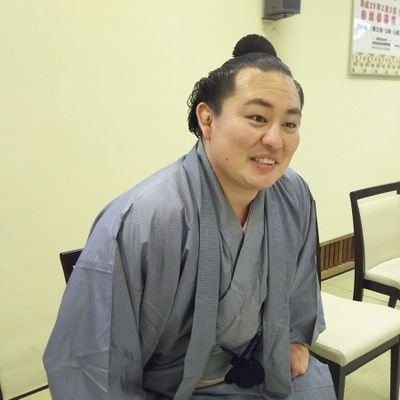The Mizu-oke, a wooden bucket used in sumo rituals, plays a far more significant role than most spectators realize. Before stepping into the sacred ring, wrestlers rinse their mouths as a symbolic act of purification. This simple gesture reflects deep spiritual roots, emphasizing that sumo is not just a sport but a sacred tradition grounded in Shinto beliefs.
- What is Mizu-oke? Its Role in Sumo Tradition
- Where is the Mizu-oke Located? Placement and Usage in the Ring
- The Origins of Mizu-oke: Connection to Shinto and Ancient Rituals
- For Beginners and International Fans: How to Appreciate the Mizu-oke
- Going Deeper: The Mizu-oke and Its Connection to Other Sumo Rituals
- Conclusion
What is Mizu-oke? Its Role in Sumo Tradition
A Ritual of Purification with Deep Spiritual Meaning
The Mizu-oke is a bucket placed in the four corners of the sumo ring, used by wrestlers to rinse their mouths before stepping onto the sacred dohyo. This act is not merely for hygiene. It carries deep spiritual significance rooted in Shinto, the indigenous religion of Japan.
By cleansing themselves with water, wrestlers symbolically purify both body and spirit, preparing to engage in the match as a sacred ritual. It is also a form of respect toward the opponent, the audience, and the tradition itself.
Let’s take a look at the basic overview of the Mizu-oke:
| Item | Description |
|---|---|
| Purpose | Purification, mental focus, and display of courtesy |
| Main Action | Scoop water with a ladle, rinse mouth, and spit out |
| Religious Role | Shinto-style cleansing before entering sacred space |
| Used By | Both wrestlers before each bout |
| Cultural Value | Essential for understanding sumo’s spiritual roots |
Where is the Mizu-oke Located? Placement and Usage in the Ring
A Sacred Object Placed at the Four Corners of the Dohyo
The Mizu-oke is located at each of the four corners of the sumo ring. It is always ready for use by the wrestlers before their matches. Next to the Mizu-oke, you will also find salt, another purification tool.
The ritual use of the Mizu-oke follows a precise sequence:
| Step | Action |
|---|---|
| 1 | Wrestler approaches the Mizu-oke |
| 2 | Scoops water using the ladle |
| 3 | Rinses mouth and quietly spits the water outside the ring |
| 4 | Steps onto the dohyo with focused mind |
These movements are performed with dignity and stillness, symbolizing the wrestler’s mental readiness. Even for the audience, this ritual conveys a sense of serenity and respect before the intensity of the bout.
The Origins of Mizu-oke: Connection to Shinto and Ancient Rituals
A Tradition Inherited from Sacred Shinto Practices
Sumo was originally conducted as a Shinto ritual to pray for a good harvest and ward off evil spirits. The sumo ring itself is considered sacred, and purification is necessary before entering it.
The Mizu-oke derives from the traditional “temizu” ritual performed at Shinto shrines, where visitors cleanse their hands and mouths before approaching the deity.
Here is how sumo’s various rituals correspond to Shinto meanings:
| Sumo Ritual | Shinto Significance |
|---|---|
| Rinsing with water | Physical and spiritual purification |
| Throwing salt | Warding off evil spirits |
| Stomping (shiko) | Calming the earth and purifying the space |
| Bowing | Expressing respect toward the gods and opponent |
Through these actions, sumo maintains its identity not just as a sport, but as a sacred tradition.
For Beginners and International Fans: How to Appreciate the Mizu-oke
What to Watch for During This Key Ritual
The Mizu-oke may seem like a minor detail to first-time viewers, but it holds valuable cultural significance. Observing the Mizu-oke ritual reveals the wrestler’s mental state and preparedness before the match.
| Viewing Point | What to Observe |
|---|---|
| Approach to the Mizu-oke | Watch the wrestler’s focused expression |
| Handling of the ladle | Smooth and respectful movement without wasteful gestures |
| Spitting of water | Performed quietly, reflecting refinement and respect |
Understanding this ritual helps you move beyond just watching a sport and begin experiencing sumo as a cultural and spiritual performance.
Going Deeper: The Mizu-oke and Its Connection to Other Sumo Rituals
Salt, Shiko, and Mizu-oke as a Unified Purification Process
In sumo, every movement has purpose. Alongside the Mizu-oke, you’ll often notice salt throwing, stomping, and bowing — all acts of purification.
Here’s how these key rituals work together:
| Ritual | Meaning |
|---|---|
| Mizu-oke | Rinse mouth to purify and calm the spirit |
| Salt throwing | Cleanse the ring and banish evil |
| Shiko (stomp) | Subdue spirits and purify the ground |
| Bowing | Show gratitude and respect |
As part of this sequence, the Mizu-oke serves as the final moment of preparation, symbolizing the wrestler’s internal readiness to face their opponent in both mind and spirit.
Conclusion
Discover the Depth of Sumo Through the Mizu-oke
The Mizu-oke is not merely a bucket. It is a sacred tool deeply embedded in the culture, spirituality, and etiquette of sumo. Through its use, wrestlers show their mental discipline, respect, and connection to tradition.
For anyone watching sumo, paying attention to the Mizu-oke ritual adds a new dimension to the experience. You begin to realize that sumo is not only about strength or victory, but also about spiritual readiness, respect, and cultural preservation.
Next time you watch a sumo match, look out for the Mizu-oke. Within that simple act of rinsing lies a world of tradition, dignity, and beauty.





コメント